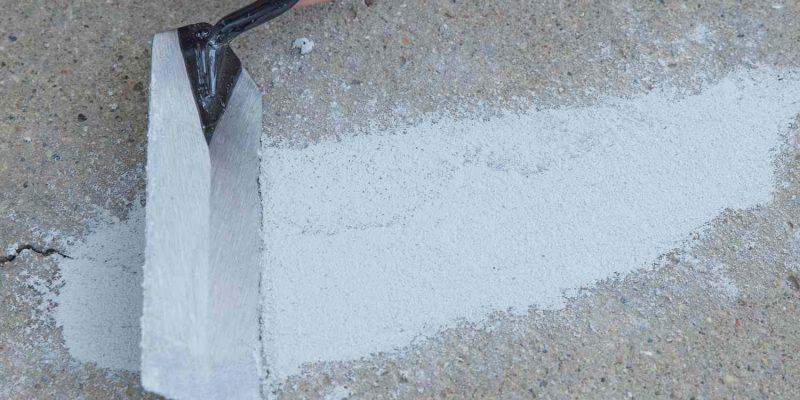Cracks can occur in concrete, despite its durability and versatility. Cracks can form in concrete surfaces over time due to various factors, such as ground movement and structural stress. If left unattended, these cracks can not only affect the aesthetics of a structure but could also be dangerous. Repairing cracks in concrete can be done with the proper knowledge and tools. This comprehensive guide will examine various methods and techniques to fix cracks in concrete.
Before tackling the concrete crack repair process, you need to know the types of cracks in concrete. Concrete cracks can be of two types:
1. Plastic Shrinkage cracks: These are typically seen during the early stages in the curing of concrete, when the excess water evaporates faster than the surface can be replenished. These cracks are often shallow and random.
2. Settlement Cracks: Settlements cracks are caused by soil shifting or compressing beneath the concrete, which causes the concrete to settle unevenly. These cracks can be diagonal, and their width and depth can vary.
3. Structural Cracks: Structural Cracks are caused by excessive loads, bad construction techniques, or structural movements. They may be deeper and wider than other cracks, and they can indicate structural problems.
4. Cracks caused by freeze-thaw cycles: In cold climates, the expansion and contraction of water within concrete pores can lead to cracks.
5. Hairline Cracks: These are tiny cracks which often appear due to thermal expansion or minor shrinkage. They may not be a structural concern immediately, but they can grow over time.
Let’s examine how to repair concrete cracks now that we know the different types.
Repairing concrete cracks:
The type and severity of the crack will determine how to repair it. Concrete crack repair is done using a few common techniques.
- Surface Crack Repair:
a. Cleaning the crack: Remove any loose concrete, debris and vegetation using compressed air or a wirebrush.
b. Use crack filler. For small cracks on the surface or hairline cracks, you can use epoxy resin or concrete crack filler. Use a caulking tool to apply the filler, making sure it covers the entire crack. After the filler is applied, smooth the surface with a putty blade and remove excess filler. Allow the filler time to cure as per the instructions of the manufacturer. - Injection Repair:
a. Prepare the crack. Clean it thoroughly, and then widen the crack slightly with a hammer and chisel. This will help create a stronger bond between the injection material and the crack.
b. Fill the cracks with epoxy or polyurethane using a special injection gun. These materials penetrate deeply into the cracks and form a strong adhesive bond once cured. Seal the surface. After the injection material is cured, seal it with concrete sealer. This will prevent moisture from infiltrating and further cracking. - Overlay Repair
a. Prepare the surface by cleaning it thoroughly and removing any loose debris. Consider applying a bonding product to the crack if it is deep or wide.
b. Apply the overlay material. Mix and apply the polymer-modified overlaid material using a trowel, or squeegee. Make sure the overlay material has been evenly distributed along the crack’s edges. After the overlay material is cured, smooth the surface with a concrete finishing tool. Let the overlay cure completely before exposing it to foot traffic or vehicle traffic. - Slabjacking :
Slabjacking is also called mudjacking and it’s a technique that lifts and levels concrete slabs which are sunken or uneven. This technique involves drilling holes in the slab, and injecting a mixture of slurry beneath the surface. Slabjacking can be used to repair settlement cracks in concrete surfaces and restore structural integrity.
Conclusion:
Concrete cracks are common, but they do not have to be an eyesore and a safety hazard. Understanding the types of cracks, and using the appropriate repair methods, can restore strength, functionality and the appearance of concrete surfaces. Crack repair is vital for the longevity and integrity concrete structures, whether you are dealing with minor surface issues or structural problems.













Comments